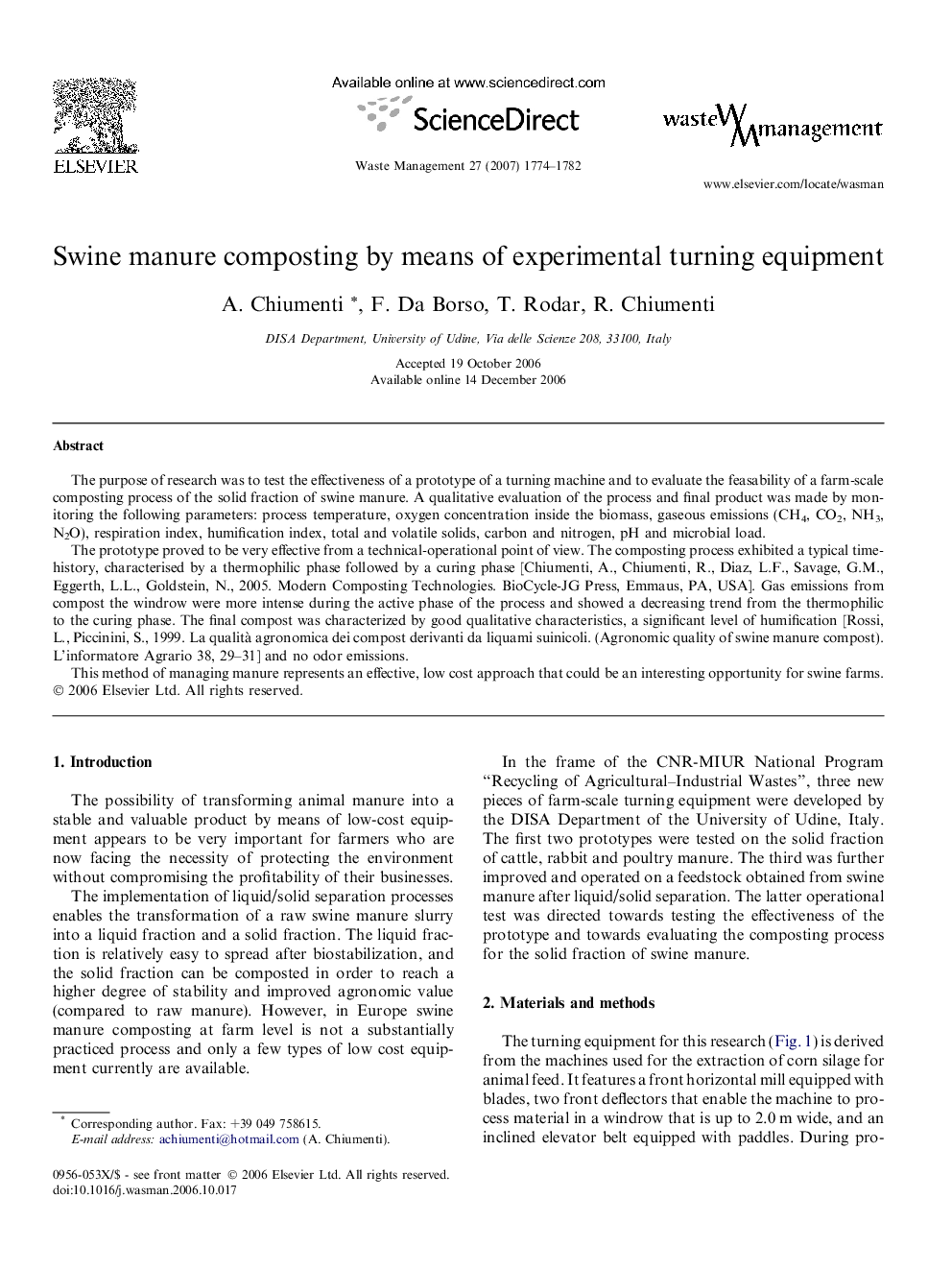| Article ID | Journal | Published Year | Pages | File Type |
|---|---|---|---|---|
| 4473749 | Waste Management | 2007 | 9 Pages |
The purpose of research was to test the effectiveness of a prototype of a turning machine and to evaluate the feasability of a farm-scale composting process of the solid fraction of swine manure. A qualitative evaluation of the process and final product was made by monitoring the following parameters: process temperature, oxygen concentration inside the biomass, gaseous emissions (CH4, CO2, NH3, N2O), respiration index, humification index, total and volatile solids, carbon and nitrogen, pH and microbial load.The prototype proved to be very effective from a technical-operational point of view. The composting process exhibited a typical time-history, characterised by a thermophilic phase followed by a curing phase [Chiumenti, A., Chiumenti, R., Diaz, L.F., Savage, G.M., Eggerth, L.L., Goldstein, N., 2005. Modern Composting Technologies. BioCycle-JG Press, Emmaus, PA, USA]. Gas emissions from compost the windrow were more intense during the active phase of the process and showed a decreasing trend from the thermophilic to the curing phase. The final compost was characterized by good qualitative characteristics, a significant level of humification [Rossi, L., Piccinini, S., 1999. La qualità agronomica dei compost derivanti da liquami suinicoli. (Agronomic quality of swine manure compost). L’informatore Agrario 38, 29–31] and no odor emissions.This method of managing manure represents an effective, low cost approach that could be an interesting opportunity for swine farms.
